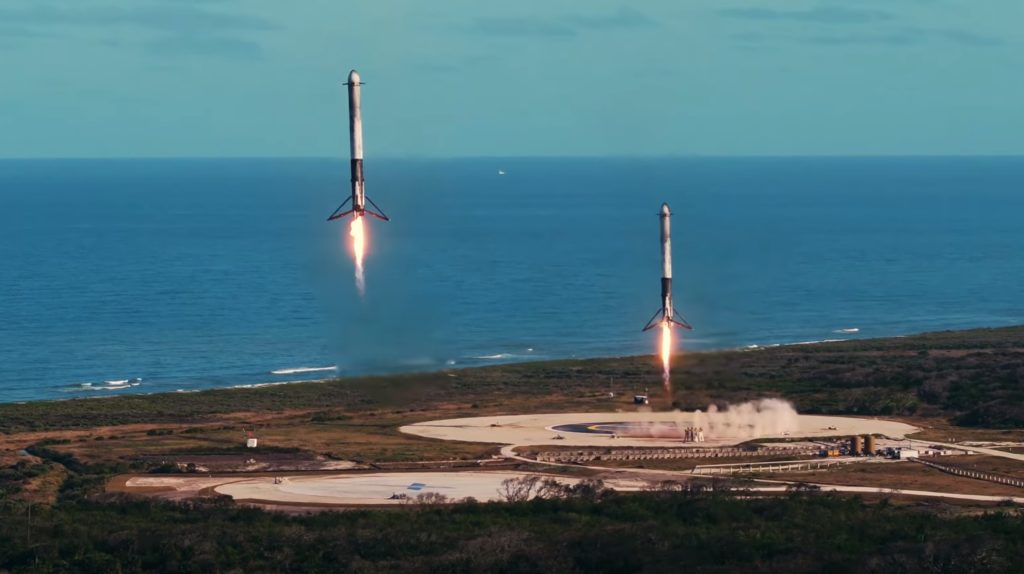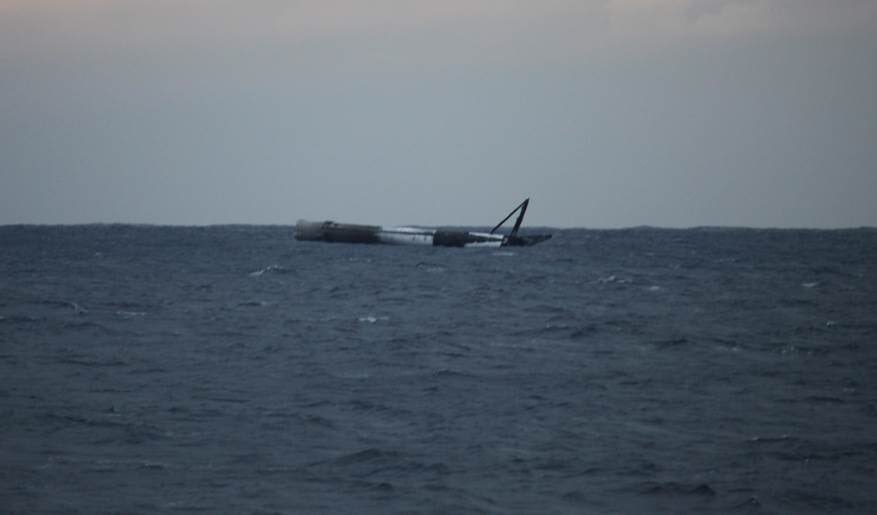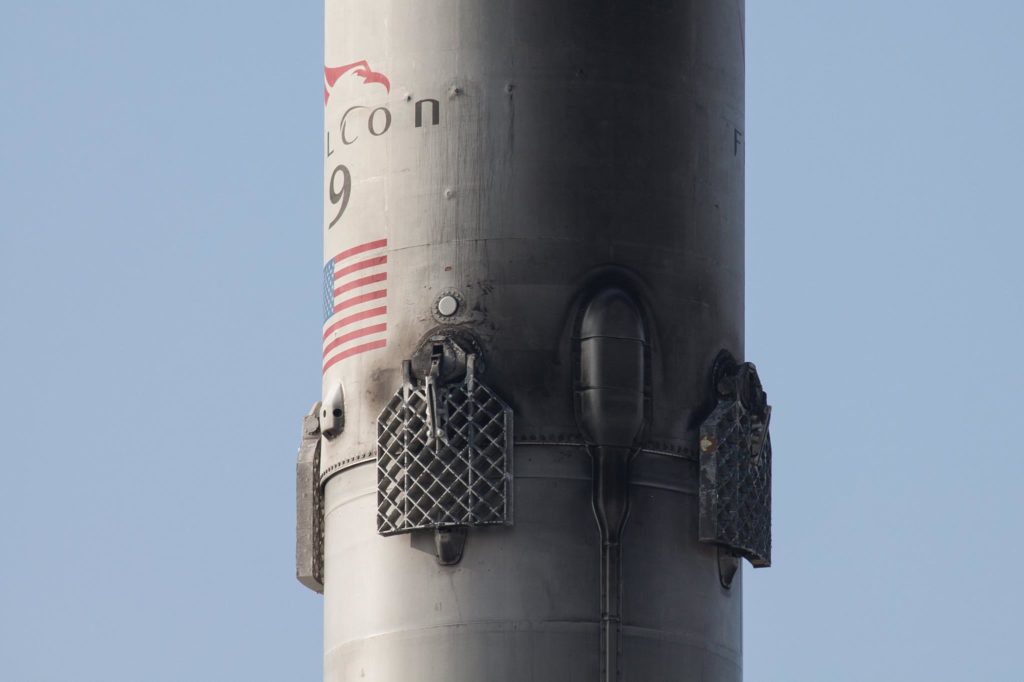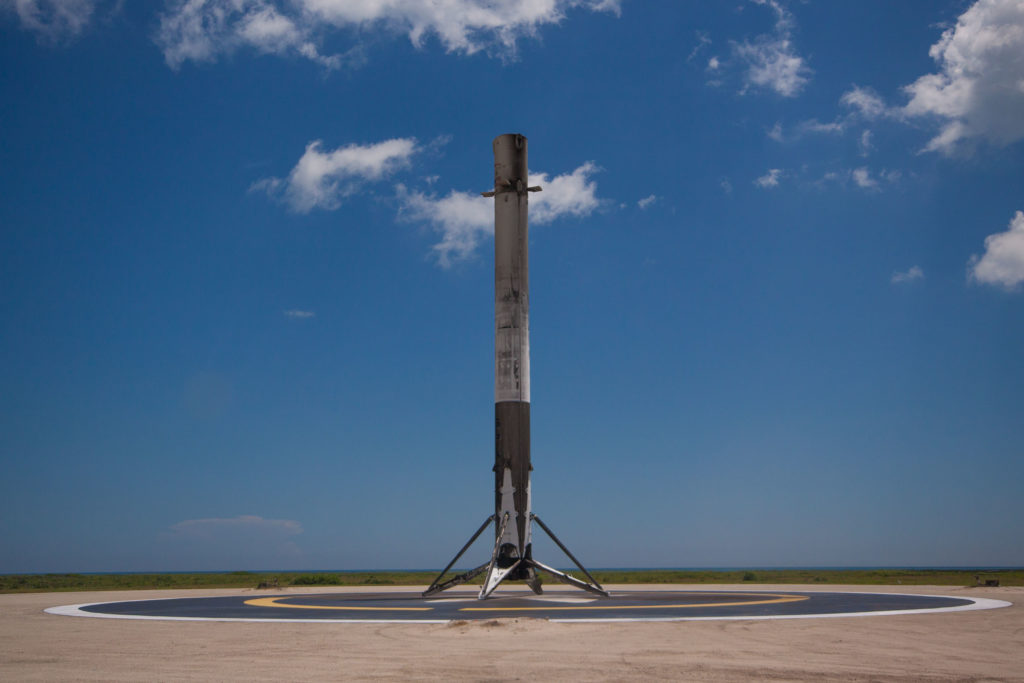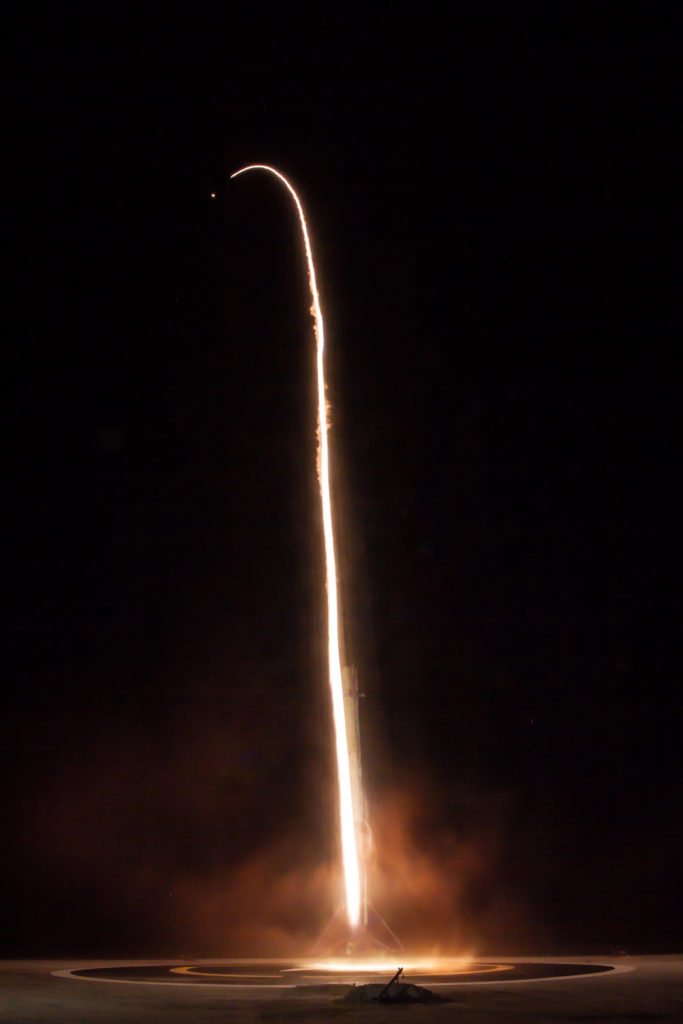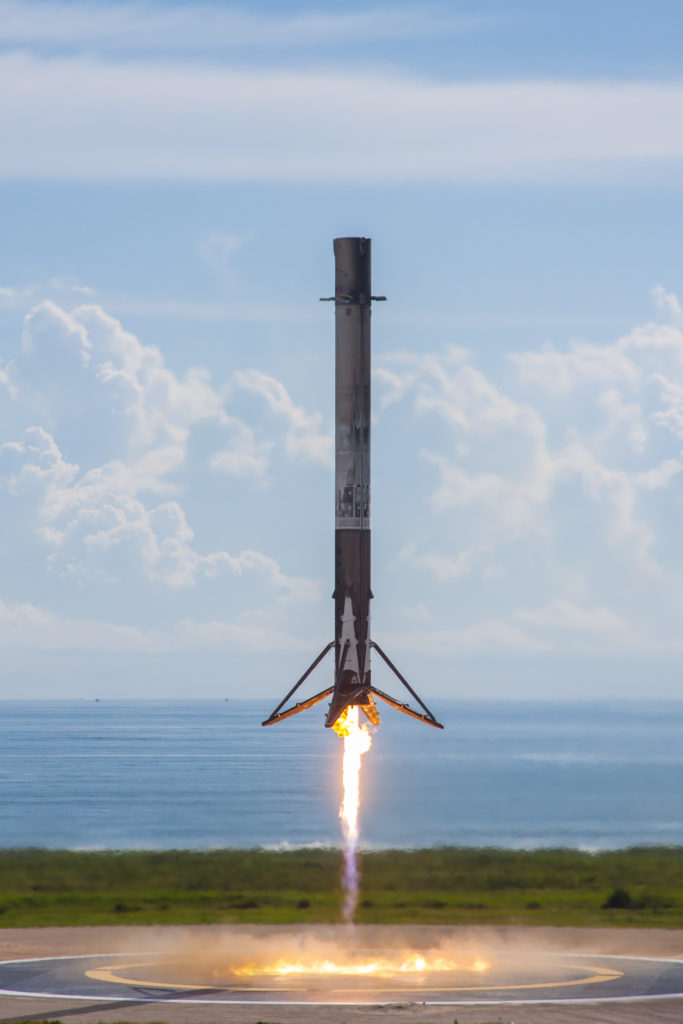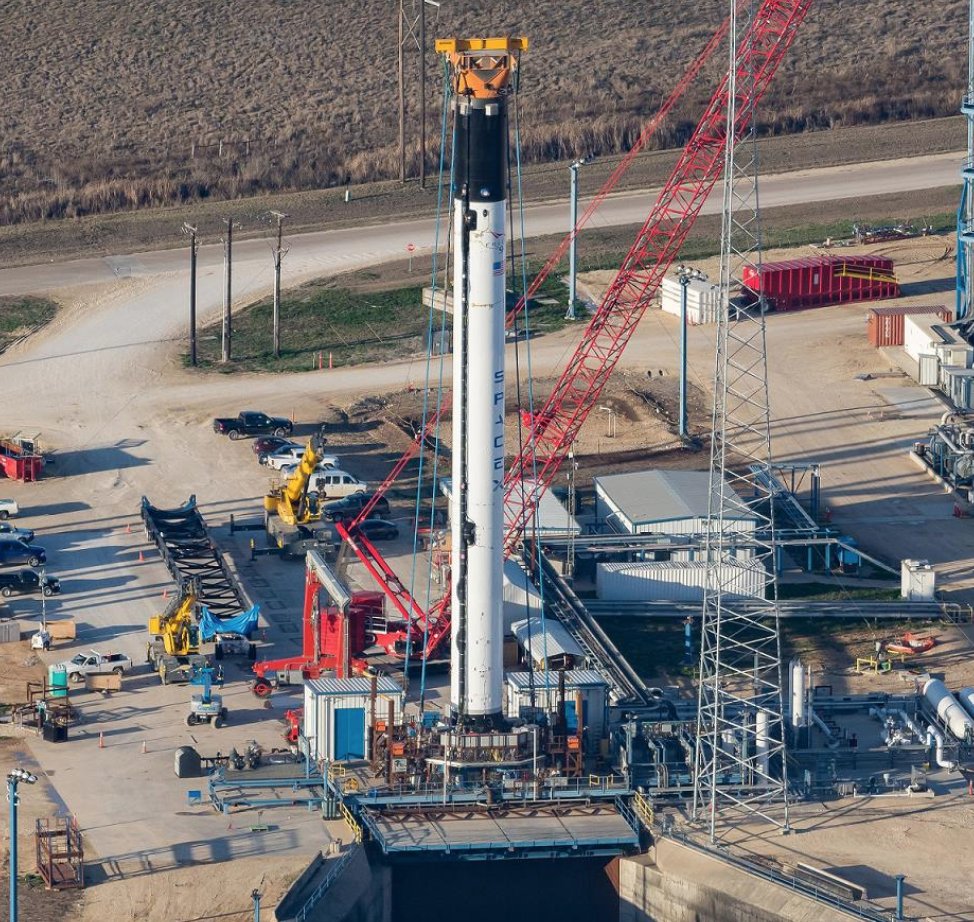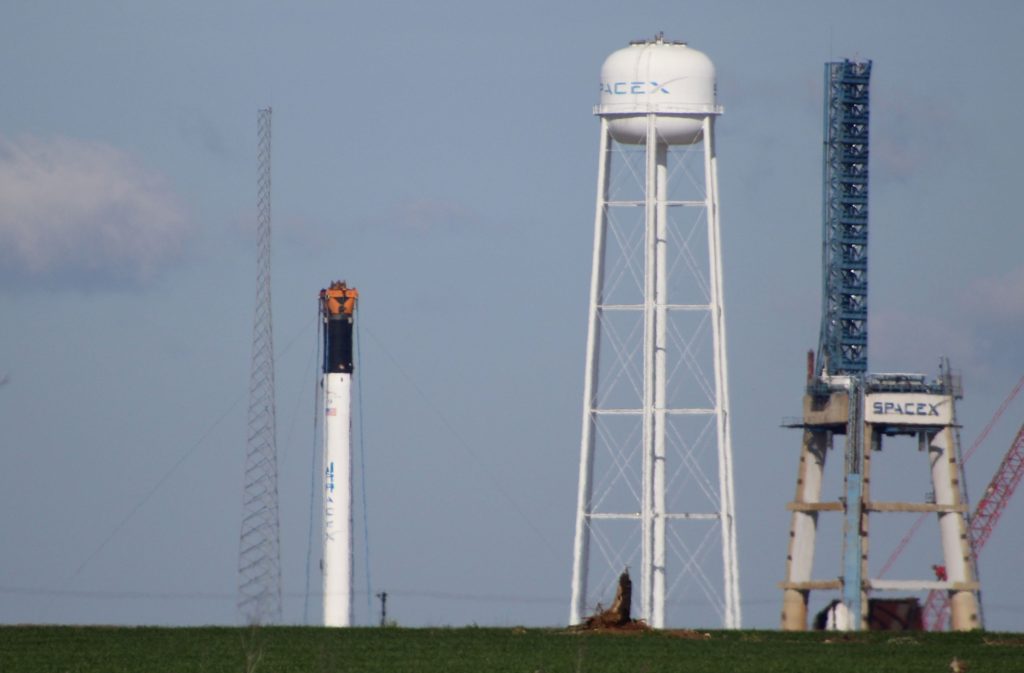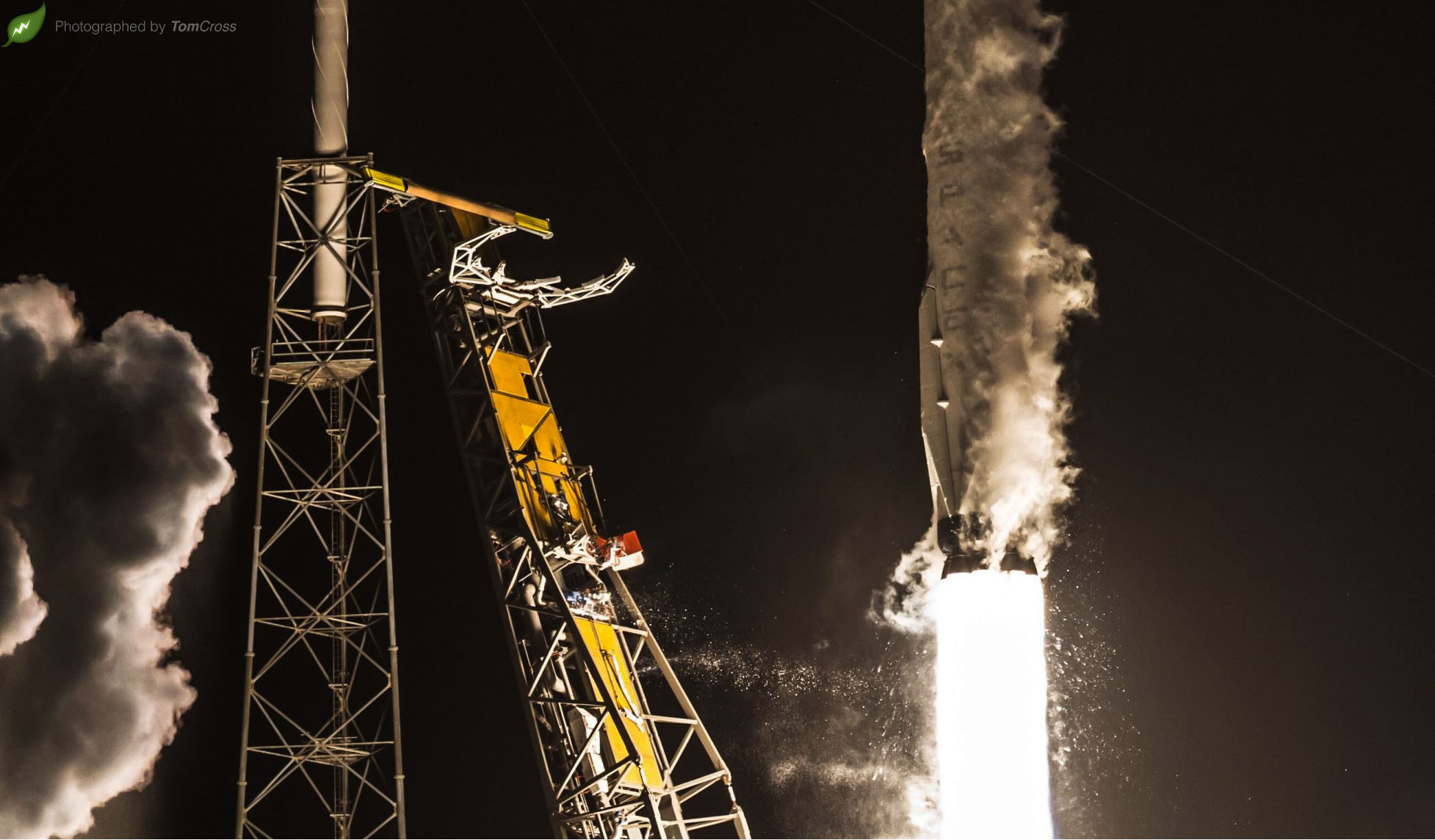

News
SpaceX Falcon 9 Block 5 will usher in a new era of rapid reuse rockets
Despite all missions being readily in the range of recovery, SpaceX has only attempted to recover its Falcon boosters after two of the company’s five 2018 launches. If anything, the attachment to Falcon boosters and the apparent melancholy felt by many observers when they are not recovered is a testament to the staggeringly abrupt success of SpaceX’s reusable rocketry program.
- Falcon Heavy’s side boosters seconds away from near-simultaneous landings at Landing Zones 1 and 2. (SpaceX)
- GovSat’s Falcon 9 1032 spotted in one piece by Elon Musk after a soft-landing in the Atlantic. (Elon Musk)
Aside from Falcon Heavy’s center core and 1044, each booster expended in the last several months (Iridium-4, GovSat-1, and PAZ) was aging, flight-proven, and nearing the end of its operational life: Block 3 and Block 4 Falcon 9s were simply not designed or expected to fly more than two or three times total. Their seemingly premature deaths were thus a necessary step along the path to Block 5 and truly rapid and cheap booster reuse; perhaps as pragmatic as quite literally making space for new and superior hardware at SpaceX’s many facilities. The demise of Falcon Heavy’s center core nevertheless made for a spectacular video (skip to 1:10, or watch the whole thing…).
The end (of old Falcons) is nigh
Despite the carnage in recent times, the next two weeks are likely to see several more flight-proven Falcon 9s meet their timely, watery demise, or at least complete their final flight in the case of CRS-14.
- Iridium-5 (NET March 29) will be flying atop Booster (B) 1041, previously used for Iridium-3 (Oct. 2017)
- CRS-14 (NET April 2) will make use of B1039, a booster that debuted with the launch of CRS-12 (Aug. 2017)
- Iridium-6/GRACE-FO (NET April 28) was confirmed just yesterday to be flying on B1043, the booster that launched the now-infamous Zuma spysat this January
- Lastly, SES-12 (NET April 30) will likely use B1040, which orbited the USAF’s secretive X-37B spaceplane in Sept. 2017
- Booster 1041 arrives in Port of San Pedro, CA in Oct. 2017 after successfully completing its first launch. (Pauline Acalin)
- Booster 1039 lands after successfully launching CRS-12’s Cargo Dragon into orbit. 1039 completed its final mission on Monday afternoon, April 2. (SpaceX)
- After landing at LZ-1, B1043 was refurbished in approximately four months. (SpaceX)
- Falcon 9 B1040 returns to LZ-1 after the launch of the USAF’s X-37B spaceplane. (SpaceX)
While more than a little hard to believe, this series of launches over the next 4-6 weeks may see SpaceX’s fleet of flight-proven boosters shrink to no more than two flightworthy cores – perhaps just a single Falcon 9. The launch of NASA’s exoplanet observatory TESS – set to use the brand new Falcon 9 B1045 – will likely see one additional flight after landing at LZ-1 or OCISLY in mid-April. The final flight-proven booster known to exist in a potentially flightworthy state is B1042, famous for its moderate attempt at self-immolation and Roomba-murder (correction: the Roomba murder attempt was actually a few weeks before, during the landing of SES-11’s flight-proven booster) after the successful launch of Koreasat-5A in Oct. 2017. B1042’s future is unknown at this point, however, as the post-landing fire may have damaged the booster beyond repair.
Rounding out SpaceX’s entire fleet of boosters, at least after SES-12, are the flight-proven B1045, the first-ever Block 5 booster (B1046) – flight-proven after Bangabandhu-1, and the second Block 5 booster (B1047). Assuming that Block 5’s first hot-fire testing has gone well at SpaceX’s McGregor, TX facilities, it’s probable that B1048 and perhaps B1049 will roll out of the Hawthorne factory and head to Texas for their own tests between now and then.
https://www.instagram.com/p/BgfboKIB17H/
TL;DR: SpaceX is betting heavily on Block 5
The purpose of this brief jaunt through the annals of SpaceX’s rocket fleet and production goals is to demonstrate just how aggressively SpaceX has bet on Block 5 – both on its success as a new and complex technological system and as an unprecedentedly reusable orbital-class rocket. If any design or manufacturing flaws are discovered in the first several Block 5 Falcon 9s, or if Block 5 turns out to be less reusable than SpaceX hopes, the company could well find its manifested launch dates slipping as flightworthy boosters – not satellites – become the bottleneck for access to orbit.
Nevertheless, SpaceX has at least six full-up Falcon 9 boosters in various stages of integration and completion at their Hawthorne factory, as well as 1046 in (or departing) Texas and 1047 presumably on its way there. SpaceX certainly has a strong track record of introducing its many upgraded iterations of Falcon 9 in the past – fingers crossed that that trend continues with Block 5. If SpaceX’s confidence still rings true a month or two from today, a new era of access to space will have truly begun, and SpaceX will be able to quite rapidly refocus a considerable portion of its workforce on getting to Mars.
- SpaceX Block 5 Falcon9 at McGregor, Texas [Credit: Chris G – NSF via Twitter, Reprinted with permission from NASASpaceflight.com]
- SpaceX continues a cautious regiment of tests for the newest Falcon 9 upgrade, Block 5. (Reddit /u/HollywoodSX)
Follow us for live updates, behind-the-scenes sneak peeks, and a sea of beautiful photos from our East and West coast photographers.
Teslarati – Instagram – Twitter
Tom Cross – Twitter
Pauline Acalin – Twitter
Eric Ralph – Twitter
News
Tesla begins Robotaxi certification push in Arizona: report
Tesla seems serious about expanding its Robotaxi service to several states in the coming months.

Tesla has initiated discussions with Arizona transportation regulators to certify its driverless Robotaxi service in the state, as per a recent report from Bloomberg News. The move follows Tesla’s launch of its Robotaxi pilot program in Austin, Texas, as well as CEO Elon Musk’s recent comments about the service’s expansion in the Bay Area.
The Arizona Department of Transportation confirmed to Bloomberg that Tesla has reached out to begin the certification process for autonomous ride-sharing operations in the state. While details remain limited, the outreach suggests that Tesla is serious about expanding its driverless Robotaxi service to several territories in the coming months.
The Arizona development comes as Tesla prepares to expand its service area in Austin this weekend, as per CEO Elon Musk in a post on X. Musk also stated that Tesla is targeting the San Francisco Bay Area as its next major market, with a potential launch “in a month or two,” pending regulatory approvals.
Tesla first launched its autonomous ride-hailing program on June 22 in Austin with a small fleet of Model Y vehicles, accompanied by a Tesla employee in the passenger seat to monitor safety. While still classified as a test, Musk has said the program will expand to about 1,000 vehicles in the coming months. Tesla will later upgrade its Robotaxi fleet with the Cyercab, a two-seater that is designed without a steering wheel.
Sightings of Cybercab castings around the Giga Texas complex suggests that Tesla may be ramping the initial trial production of the self-driving two-seater. Tesla, for its part, has noted in the past that volume production of the Cybercab is expected to start sometime next year.
In California, Tesla has already applied for a transportation charter-party carrier permit from the state’s Public Utilities Commission. The company is reportedly taking a phased approach to operating in California, with the Robotaxi service starting with pre-arranged rides for employees in vehicles with safety drivers.
News
Tesla sets November 6 date for 2025 Annual Shareholder Meeting
The automaker announced the date on Thursday in a Form 8-K.

Tesla has scheduled its 2025 annual shareholder meeting for November 6, addressing investor concerns that the company was nearing a legal deadline to hold the event.
The automaker announced the date on Thursday in a Form 8-K submitted to the United States Securities and Exchange Commission (SEC). The company also listed a new proposal submission deadline of July 31 for items to be included in the proxy statement.
Tesla’s announcement followed calls from a group of 27 shareholders, including the leaders of large public pension funds, which urged Tesla’s board to formally set the meeting date, as noted in a report from The Wall Street Journal.
The group noted that under Texas law, where Tesla is now incorporated, companies must hold annual meetings within 13 months of the last one if requested by shareholders. Tesla’s previous annual shareholder meeting was held on June 13, 2024, which placed the July 13 deadline in focus.
Tesla originally stated in its 2024 annual report that it would file its proxy statement by the end of April. However, an amended filing on April 30 indicated that the Board of Directors had not yet finalized a meeting date, at least at the time.
The April filing also confirmed that Tesla’s board had formed a special committee to evaluate certain matters related to CEO Elon Musk’s compensation plan. Musk’s CEO performance award remains at the center of a lengthy legal dispute in Delaware, Tesla’s former state of incorporation.
Due to the aftermath of Musk’s legal dispute about his compensation plan in Delaware, he has not been paid for his work at Tesla for several years. Musk, for his part, has noted that he is more concerned about his voting stake in Tesla than his actual salary.
At last year’s annual meeting, TSLA shareholders voted to reapprove Elon Musk’s compensation plan and ratified Tesla’s decision to relocate its legal domicile from Delaware to Texas.
Elon Musk
Grok coming to Tesla vehicles next week “at the latest:” Elon Musk
Grok’s rollout to Tesla vehicles is expected to begin next week at the latest.

Elon Musk announced on Thursday that Grok, the large language model developed by his startup xAI, will soon be available in Tesla vehicles. Grok’s rollout to Tesla vehicles is expected to begin next week at the latest, further deepening the ties between the two Elon Musk-led companies.
Tesla–xAI synergy
Musk confirmed the news on X shortly after livestreaming the release of Grok 4, xAI’s latest large language model. “Grok is coming to Tesla vehicles very soon. Next week at the latest,” Musk wrote in a post on social media platform X.
During the livestream, Musk and several members of the xAI team highlighted several upgrades to Grok 4’s voice capabilities and performance metrics, positioning the LLM as competitive with top-tier models from OpenAI and Google.
The in-vehicle integration of Grok marks a new chapter in Tesla’s AI development. While Tesla has long relied on in-house systems for autonomous driving and energy optimization, Grok’s integration would introduce conversational AI directly into its vehicles’ user experience. This integration could potentially improve customer interaction inside Tesla vehicles.
xAI and Tesla’s collaborative footprint
Grok’s upcoming rollout to Tesla vehicles adds to a growing business relationship between Tesla and xAI. Earlier this year, Tesla disclosed that it generated $198.3 million in revenue from commercial, consulting, and support agreements with xAI, as noted in a report from Bloomberg News. A large portion of that amount, however, came from the sale of Megapack energy storage systems to the artificial intelligence startup.
In July 2023, Musk polled X users about whether Tesla should invest $5 billion in xAI. While no formal investment has been made so far, 68% of poll participants voted yes, and Musk has since stated that the idea would be discussed with Tesla’s board.
-

 Elon Musk1 week ago
Elon Musk1 week agoTesla investors will be shocked by Jim Cramer’s latest assessment
-

 Elon Musk3 days ago
Elon Musk3 days agoElon Musk confirms Grok 4 launch on July 9 with livestream event
-

 Elon Musk13 hours ago
Elon Musk13 hours agoxAI launches Grok 4 with new $300/month SuperGrok Heavy subscription
-

 News7 days ago
News7 days agoTesla Model 3 ranks as the safest new car in Europe for 2025, per Euro NCAP tests
-

 Elon Musk2 weeks ago
Elon Musk2 weeks agoA Tesla just delivered itself to a customer autonomously, Elon Musk confirms
-

 Elon Musk1 week ago
Elon Musk1 week agoxAI’s Memphis data center receives air permit despite community criticism
-

 Elon Musk2 weeks ago
Elon Musk2 weeks agoTesla’s Omead Afshar, known as Elon Musk’s right-hand man, leaves company: reports
-

 News2 weeks ago
News2 weeks agoXiaomi CEO congratulates Tesla on first FSD delivery: “We have to continue learning!”

